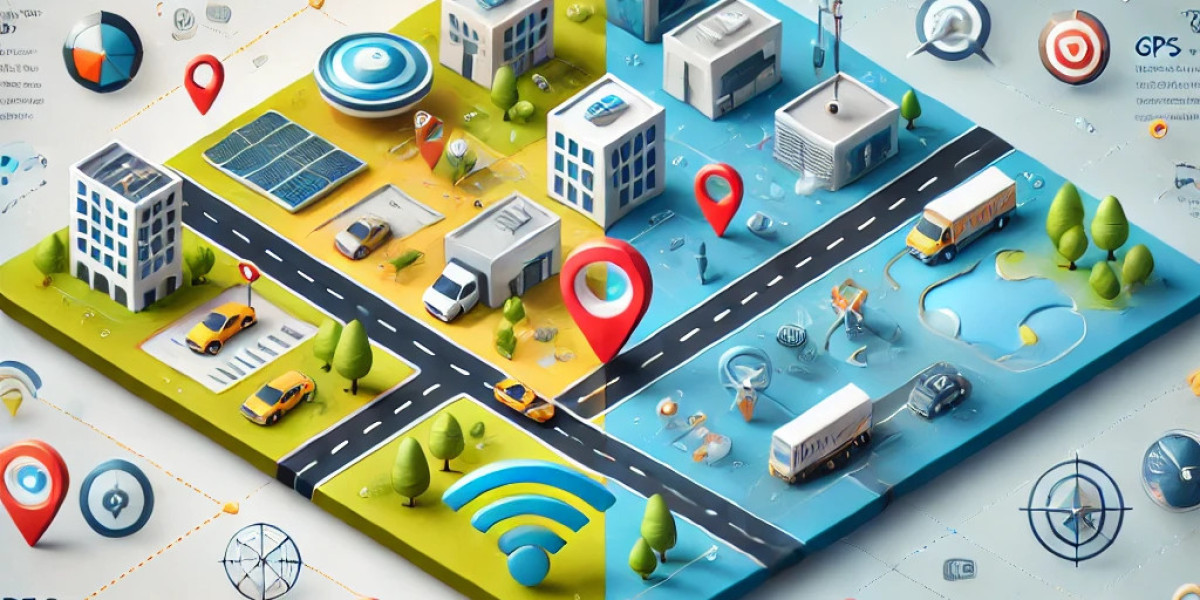When it comes to location tracking technologies, RTLS (Real-Time Location Systems) and GPS (Global Positioning System) often take center stage. Both are indispensable tools for modern industries, but they cater to vastly different needs. Whether you’re exploring solutions for asset tracking, navigation, or operational efficiency, understanding the key differences and applications of RTLS and GPS is crucial. In this blog, we’ll break down the features, benefits, and use cases of each system to help you determine the best fit for your requirements.
What is RTLS?
Real-Time Location Systems (RTLS) are designed to provide precise location data within a defined indoor or outdoor area. RTLS operates by leveraging a combination of hardware (tags, sensors, and anchors) and software to track the movement of assets, people, or vehicles in real time. Common technologies used in RTLS include RFID, Bluetooth Low Energy (BLE), Ultra-Wideband (UWB), and Wi-Fi.
Key Features of RTLS:
High Precision: RTLS can provide location accuracy within a few centimeters, making it ideal for environments where precision is critical.
Indoor Compatibility: Unlike GPS, RTLS is highly effective indoors, such as in warehouses, hospitals, and manufacturing facilities.
Customizable Coverage: RTLS systems can be tailored to cover specific areas, whether a single room or an entire building.
Applications of RTLS:
Healthcare: Tracking medical equipment, monitoring patient movements, and ensuring staff safety.
Manufacturing: Optimizing workflows by tracking machinery and raw materials.
Logistics: Enhancing inventory management and automating warehouse operations.
Retail: Analyzing customer movement patterns and improving in-store experiences.
What is GPS?
The Global Positioning System (GPS) is a satellite-based navigation system that provides location and time information globally. Developed for outdoor use, GPS relies on a network of satellites orbiting the Earth to determine the position of a device equipped with a GPS receiver.
Key Features of GPS:
Global Coverage: GPS works anywhere on Earth with a clear line of sight to satellites.
Outdoor Reliability: GPS is highly effective for outdoor navigation and tracking.
Low Operational Costs: Once the GPS receiver is installed, no additional infrastructure is needed for basic tracking.
Applications of GPS:
Navigation: Guiding vehicles, ships, and airplanes to their destinations.
Fleet Management: Tracking delivery trucks, public transportation, and construction equipment.
Outdoor Recreation: Enhancing experiences in hiking, biking, and geocaching.
Emergency Services: Locating individuals during search and rescue operations.
RTLS vs. GPS: Key Differences
| Feature | RTLS | GPS |
|---|---|---|
| Primary Use Case | Indoor tracking and localized areas | Outdoor navigation and global tracking |
| Accuracy | High (up to a few centimeters) | Moderate (up to a few meters) |
| Infrastructure | Requires localized hardware and software | Requires GPS receiver only |
| Coverage | Limited to specific areas | Global |
| Latency | Real-time | Near real-time |
Choosing the Right Solution for Your Needs
Selecting between RTLS and GPS depends largely on the environment and requirements of your application:
Choose RTLS if you need precise, real-time tracking within a defined space, especially indoors.
Opt for GPS if your primary need is outdoor navigation or global tracking.
For businesses, integrating both technologies can often deliver the best results. For example, a logistics company may use GPS to monitor vehicles on the road and RTLS to track goods within warehouses.
Emerging Trends in Location Technology
The lines between RTLS and GPS are beginning to blur as hybrid solutions emerge. These systems combine the strengths of both technologies, enabling seamless tracking indoors and outdoors. Advances in IoT (Internet of Things), AI (Artificial Intelligence), and 5G connectivity are also driving innovation, making location systems more accurate, efficient, and versatile.
Final Thoughts
Understanding the differences between Real-Time Location Systems and GPS is key to optimizing your location-tracking strategy. While GPS excels in outdoor navigation, RTLS offers unmatched precision and versatility indoors. By assessing your specific needs and staying updated on emerging trends, you can leverage these technologies to transform your operations and gain a competitive edge.


